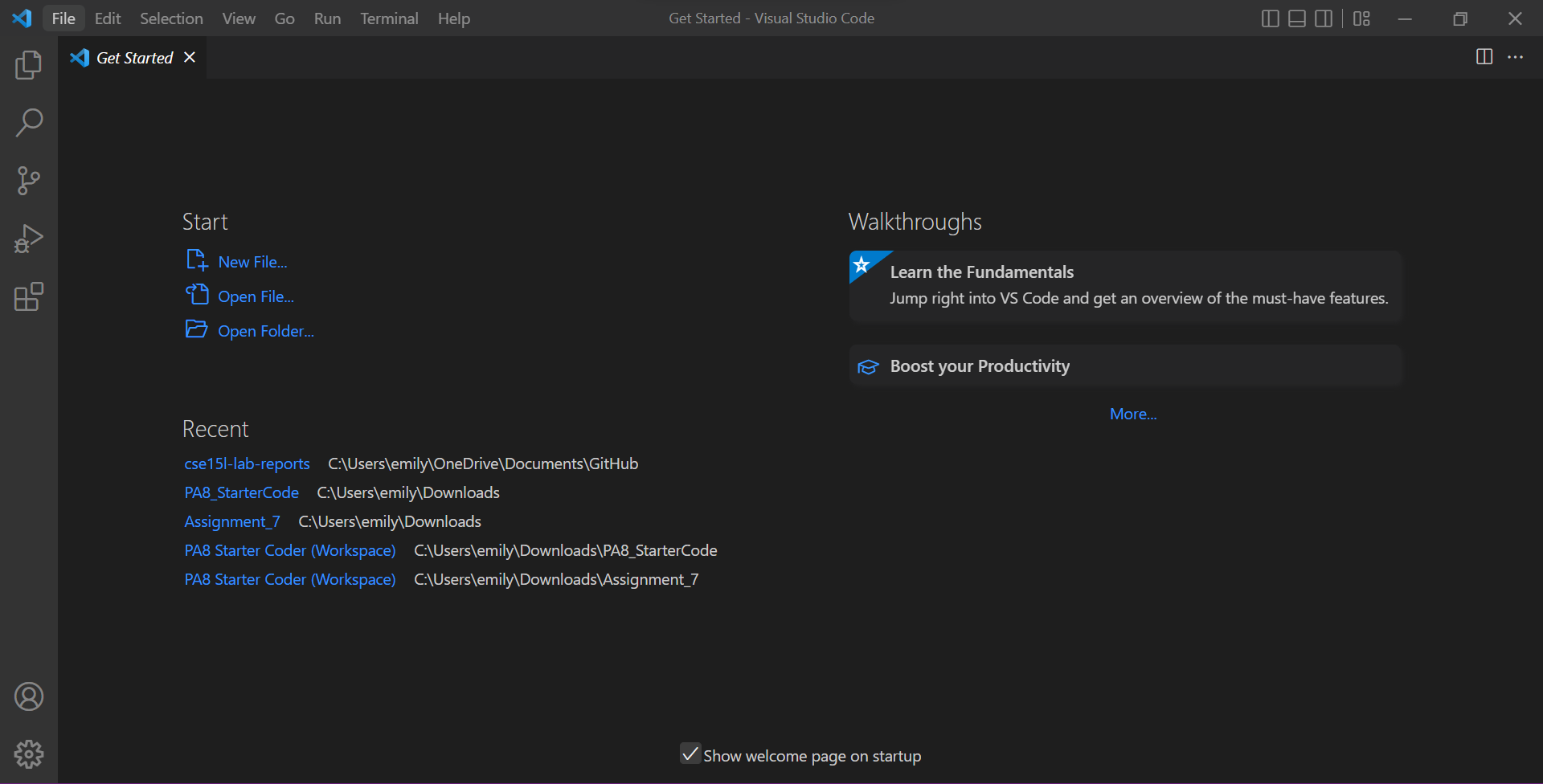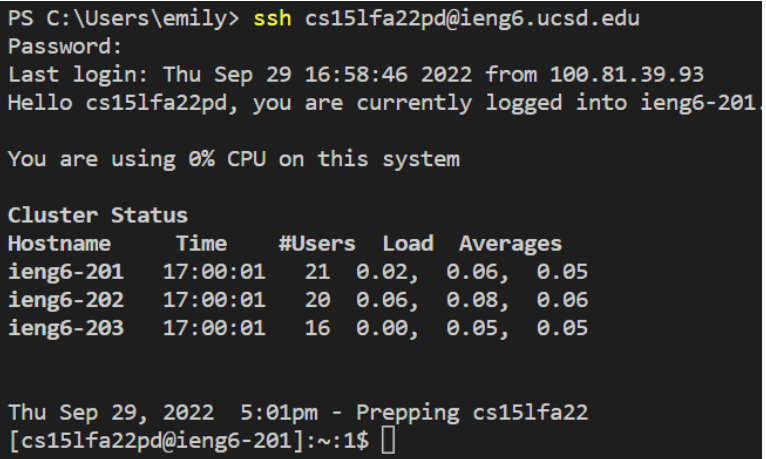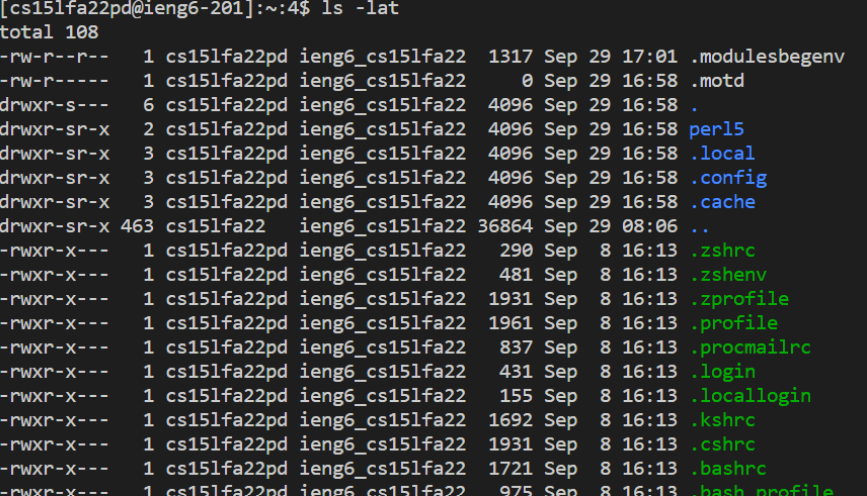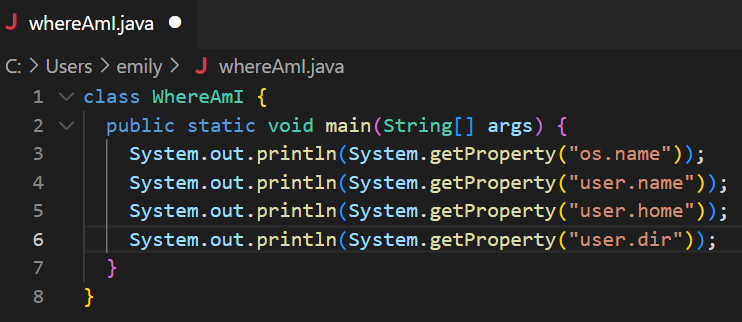cse15l-lab-reports
CSE 15L Lab Report 1 Guide by Emily Mills
This guide will cover:
1) Downloading Visual Studio Code
2) Remotely Connecting
3) Trying Commands
4) Moving Files Using SCP
5) Setting an SSH Key
6) Optimizing Remote Running
Step 1 - Downloading Visual Studio Code
Visit this website and follow the instructions Visual Studio Code Download. Once Downloaded, run the application and you should see a screen that looks like this:

Step 2 - Remotely Connecting
If you have a Windows Computer, you will need to Install OpenSSH. Only install OpenSSH client, not OpenSSH server. Once installed, you will see it here:

Note: You may already have it installed (I did!)
Next, you will need the username to your CSE 15L account. Visit Account Lookup Tool to find your username.
Now using VS Code, open a new terminal and enter the following:
ssh cs15lfa22__@ieng6.ucsd.edu
Note: The __ should be replaced by the two digits in your username.
If it is your first time logging in, you will be prompted with a confirmation message. Type and enter yes into the terminal. When you are prompted to type in your password, any keyboard activity will not show up on the terminal for privacy reasons. There is still input even if you can’t see it. After entering your password, you will see something similar to this:

Note: Mine does not show the yes/no prompting because it was not my first time logging in.
Now you are successfully logged into a computer in the CSE building!
- To logout of the remote server and back into your own client, use:
Ctrl-D
Step 3 - Trying Commands
Practice some commands on both the remote server and your own client.
Example Commands:
- cd ~
- cd
- ls -lat
- ls -a
- ls <directory> where <directory> is /home/linux/ieng6/cs15lfa22/cs15lfa22__, where the __ is one of the other group members’ username
- cp /home/linux/ieng6/cs15lfa22__/public/hello.txt ~/
- cat /home/linux/ieng6/cs15lfa22__/public/hello.txt
This is what happens when I enter the command ls -lat on the remote server:

This is what happens when I enter the command ls -lat on my client:

Step 4 - Moving Files Using SCP
To move a file using SCP, you first need to have/make a file on your own client (you can make it in VSC).
My file on my own client:

Run:
javac file_name.java
java file_name
Next, in your client terminal (the one you are currently in), run:
scp file_name.java cs15lfa22__@ieng6.ucsd.edu:~/
You will be prompted for your password. Type it in (this will not log you into your remote server, even though it requires a password).
My example:


Next, sign into the remote client (see Step 2 for reference). Once logged in, use javac and java from before:

The file is now on your remote client!
Step 5: Setting an SSH Key
Setting an SSH Key will allow you to login without having to type your password!
On the client terminal (your computer), you will type the following underlined in pink:

Note:** for the passphrase, it’s most efficient to leave it empty (meaning it will not require a password when you log in). **Ignore everything underlined in red.
Next, Login to your remote server (it will still require a password for now). Once logged in, run:
mkdir .ssh
Logout, and on your own client terminal run:
scp /Users/your_name/.ssh/id_rsa.pub cs15lfa22__@ieng6.ucsd.edu:~/.ssh/authorized_keys
You should now be able to login with SSH and transfer files using SCP without a password!
Step 6: Optimizing Remote Running
Fun Fact: you can use the command ssh cs15lfa22__@ieng6.ucsd.edu with any command after in quotation marks. It will log you into the remote server, run the command, and then log you out.

Another Fun Fact: you can run multiple commands separated by a semicolon on a single line of code.
